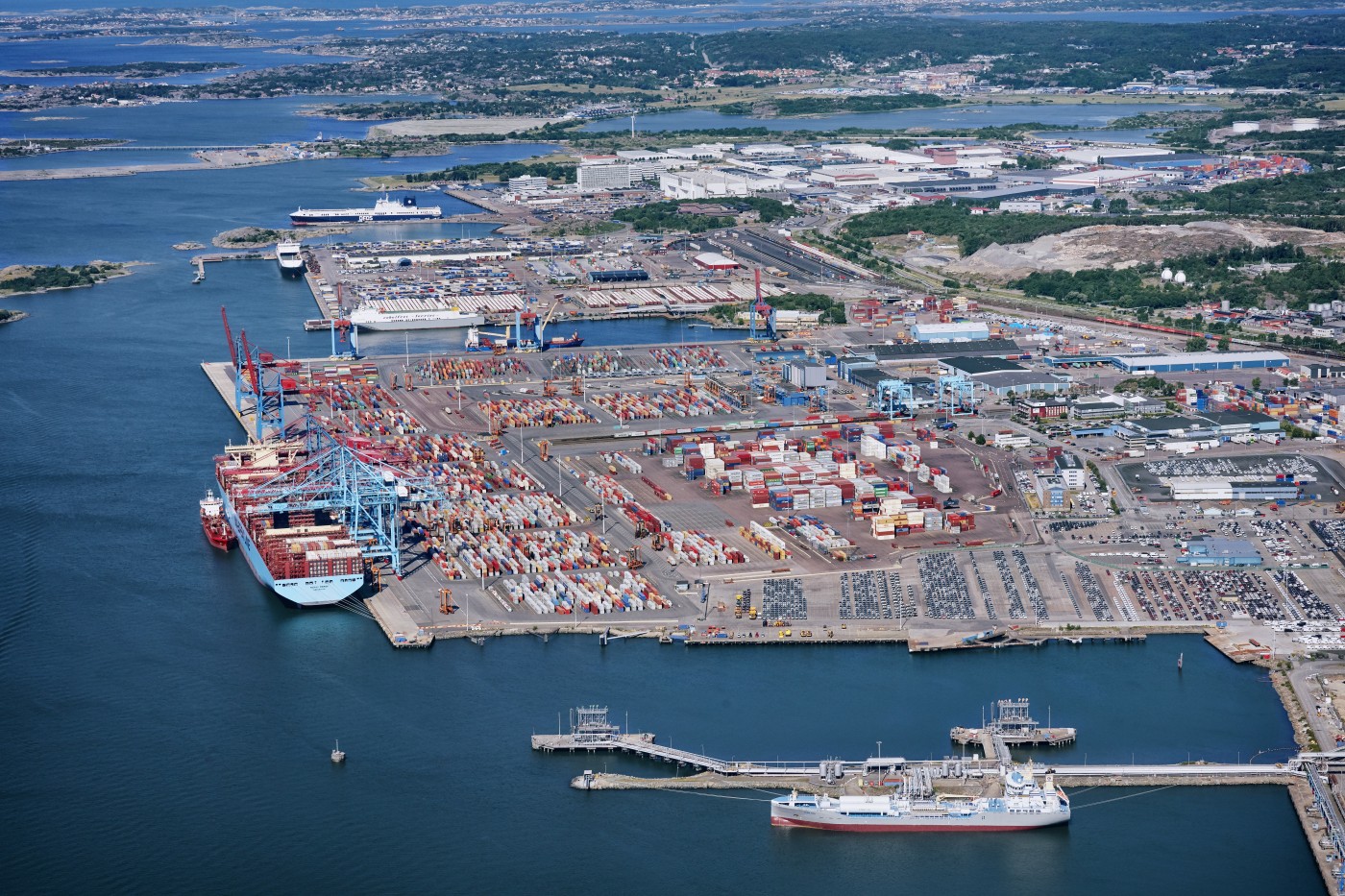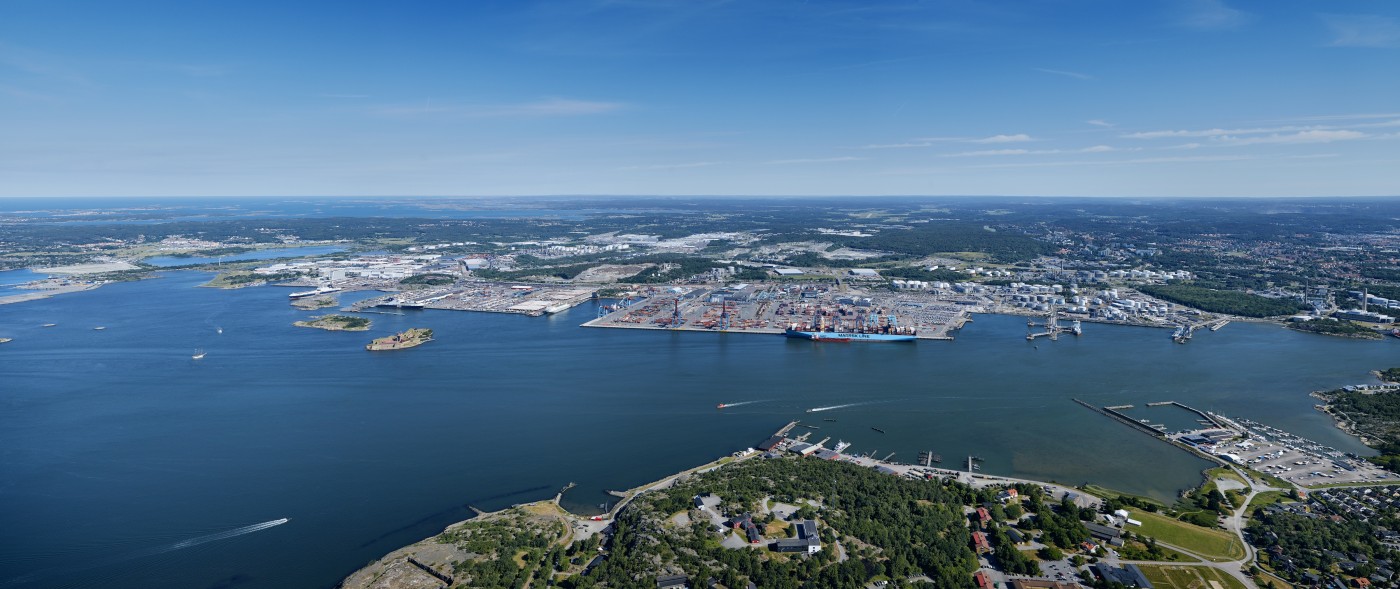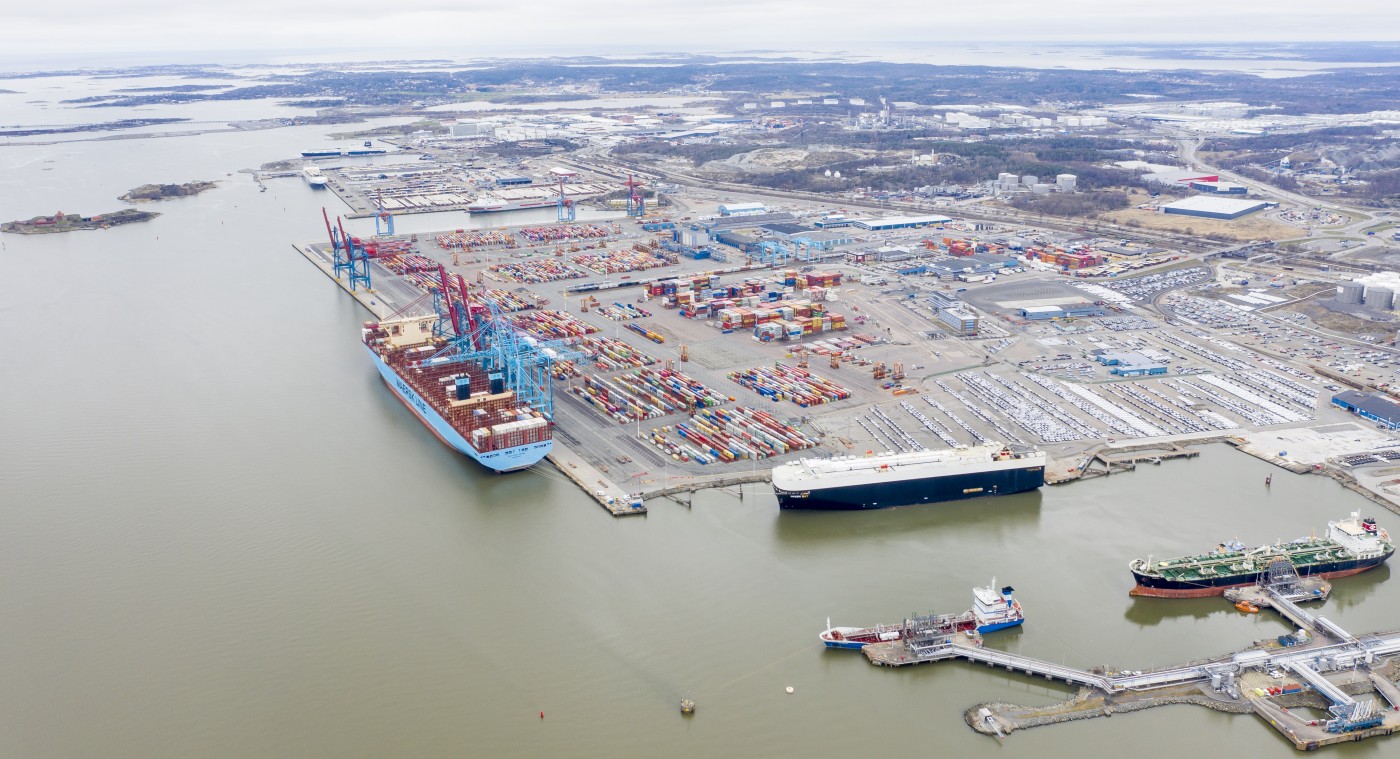10 July 2020
Our port pro of the month is Mr. Elvir Dzanic, CEO of the Port of Gothenburg. Mr. Dzanic told us more about his long-term vision for the port, the importance of the port’s hinterland connection and the port’s emission reduction targets. Discover the other interesting topics he addressed below!

Can you briefly tell us about the Port of Gothenburg? What are its main characteristics and challenges?
The Port of Gothenburg is the crown jewel of Sweden and Scandinavia, the biggest port in Scandinavia. What is mainly characteristic for the Port of Gothenburg is the fact that we rank at the very top for all transportation modes and business segments; i.e. cars, RoRo, energy, container, passengers, and cruise. We have a very diversified portfolio which demands a lot from our organisation, but at the same time makes our work challenging and fun.
How did you get into maritime transport? How did your career path lead to this position?
I started my career in the maritime industry with Unifeeder, and from there moved on to logistics in the wide sense, working for Schenker, Geodis and my last employer, CEVA. I have worked was stationed in various places around the globe my last position abroad was in Houston.
What is your vision for the Port of Gothenburg for the next decade?
The Port of Gothenburg will focus on three main areas. The first area is related to Growth (in terms of infrastructure and volume) in order to be attractive for global logistic players and carriers. The second area is Environment. We have set a very clear and ambitious target, which is to reduce CO2 emissions for all handling to, from and within the port, by land and by sea, by 70% in order to support our customers’ ambitions and because we cannot do business on a dead planet. Lastly, we will focus on Digitalisation, to create effective workstreams and increase visibility for all stakeholders (operators, shipping lines, cargo owners, truckers and many more).
These three focus areas (Growth, Environment, and Digitalisation) will lay the foundation for our next chapter and pave the way for our vision to become the Most Competitive Port in the World as we fulfill our mission and to be a Guarantee for the Industries Access to the World.

The COVID-19 crisis is having a profound impact on the economy and society. What has been the impact of the COVID-19 crisis on the Port of Gothenburg? How has the Port prepared itself to guarantee that goods can continue to be handled in the port?
The port and its partners took precautionary measures very early to ensure the safety of our staff and safety of calling vessels and their crews. This has allowed us to stay open. We have seen volume impact, predominantly on our cruise and passenger segments. However, we have worked hard and managed to ensure stable volumes in some other segments, predominantly our container and energy segments, which has now been confirmed by our trading data.
Due to the COVID-19 pandemic and its impact on global value and production chains, the debate on reshoring industry back to or closer to Europe gained a new momentum. Do you think that in time we will see a reshoring of industry closer to Europe?
Our working scenario is that the current pandemic will accelerate discussions of nearshoring as a complementary production to mitigate some of the risks, but we also foresee an increased need of storage and warehouses as just-in-time-delivery will likely be somewhat revised. We will likely see some adjustments in trading patterns and as ports we must be nimble and facilitate market changes.

Since 1 February this year, the United Kingdom is no longer member of the European Union. However, until the end of this year a transition period is foreseen, where the UK remains in the EU Single Market and Customs Union. Can you briefly describe the importance of trade with the UK for the Port of Gothenburg? How have you prepared for Brexit? Are you still preparing for a “hard Brexit”?
The UK is a large market for the Port of Gothenburg, especially in the RoRo segment. We have prepared for a challenging future in that aspect, and most of our focus was and still is to keep the market informed and to facilitate the administrative transition of customs clearance.
The Port of Gothenburg is located on the Scandinavian-Mediterranean corridor of the Trans-European Transport Network (TEN-T). How has the Port benefitted from being part of this Corridor? What is the importance of EU funding for a Port like Gothenburg?
We are Scandinavia’s largest port and handle almost 35% of Sweden’s total trading volumes and almost 50% of the country’s total container trade. To safeguard Sweden’s and Scandinavia’s position and in order to boost trade we have developed an investment programme focusing on these trades. One example is a fairway 17,5 meters deep (the project is called Skandiaporten), which will allow the world’s largest container ships to call at the Port of Gothenburg when fully loaded. This project is of importance for the corridor and the EU as a whole; and having the TEN-T status we believe we will attract attention from the EU so that we can engage in funding discussions as we have done successfully with the Swedish government.
In order to get goods to the desired destinations, good hinterland connections to the port are of paramount importance. Can you briefly describe how the Port of Gothenburg is connected to its hinterland?
Our rail services, widely known in the market as “Railport Scandinavia” is a programme developed over the last two decades. We have over 60% of all our containerised cargo moving to/from the port by rail, making us absolutely unique. We cover the densely populated areas of Sweden (and also Norway) within 5-6 hours, while most of the other territory can be covered within 15 hours. Not only is this extended rail service providing us the ability to grow our extraordinary coverage, it is also giving our customers the unique ability to move cargo across Sweden at very low emission cost. We are further investing in expanding our rail services. Our most recent investments include double track rails to/from the port with connections to the national rail tracks, as well as new rail heads in our Energy port allowing various fuels to effectively reach large portions of the territory. We also have plans to completely electrify all our major rail heads at the port.

With its Green Deal, the EU aims to have a climate-neutral economy by 2050. How do you think the European port sector can contribute to decarbonising the logistics chain? What is the Port of Gothenburg doing to reduce its environmental impact?
We cannot do business of any kind on a dead planet, and therefore I truly believe that ports, connecting shipping with hinterland logistics industry, have the possibility but also the obligation to act. I would like to see ports acting together in more collaborations leading to concrete actions (for example forums like the World Ports Climate Action Program).
As for the Port of Gothenburg, we have just set a very ambitions target of reducing CO2 emissions by 70 % on port-related waterborne and land logistics as well as port operations. As a link between land and sea, our obligation is more than just port operations, we must work to reduce shipping as well as landside logistics emissions. We aim to achieve this through heavy investments in quayside electricity as well as landside to facilitate electric mobility. Aside from infrastructure investments, we will work in close and tight collaboration with industry leaders and movers on each side to align on timelines and commitments.
Related documents
No attachments.
